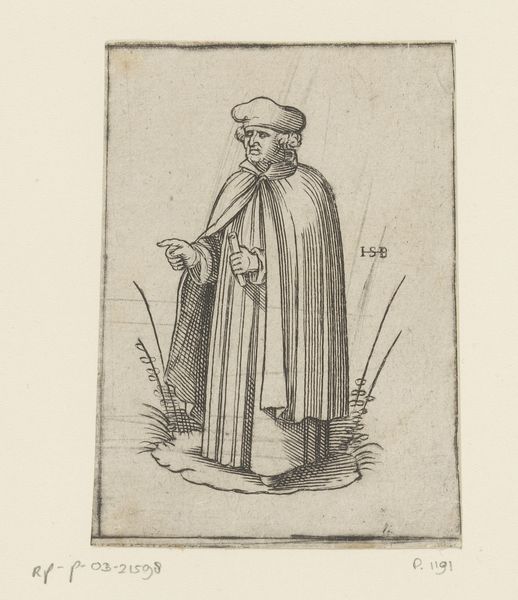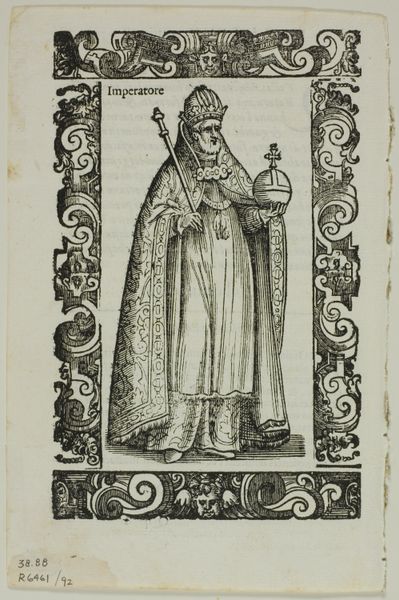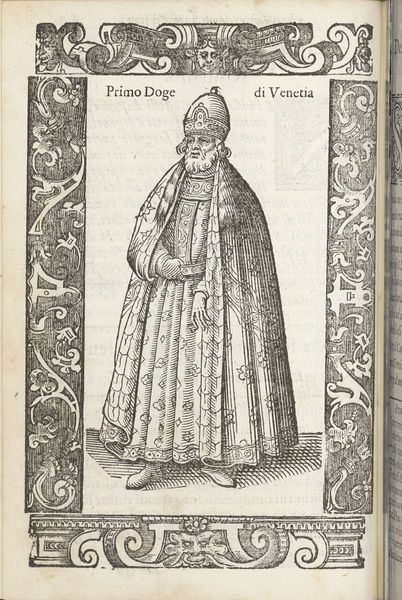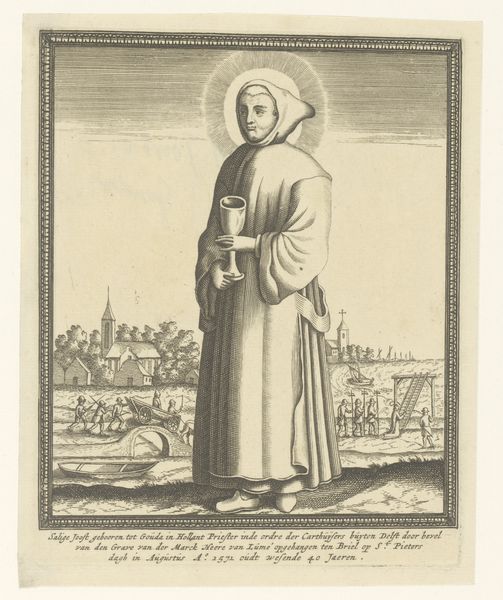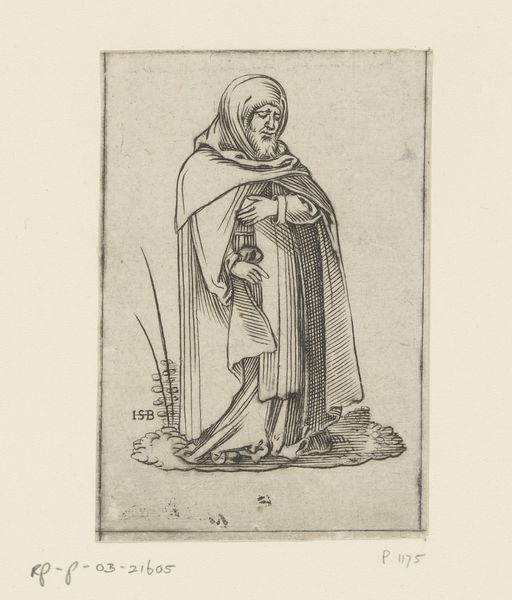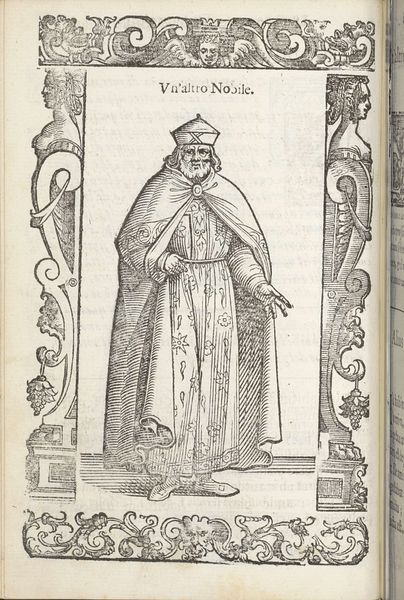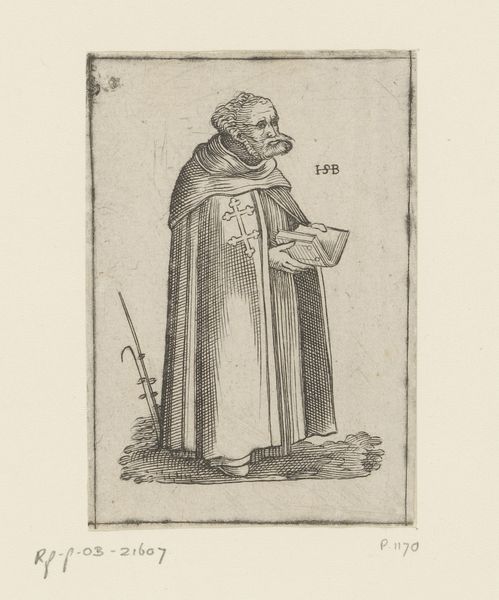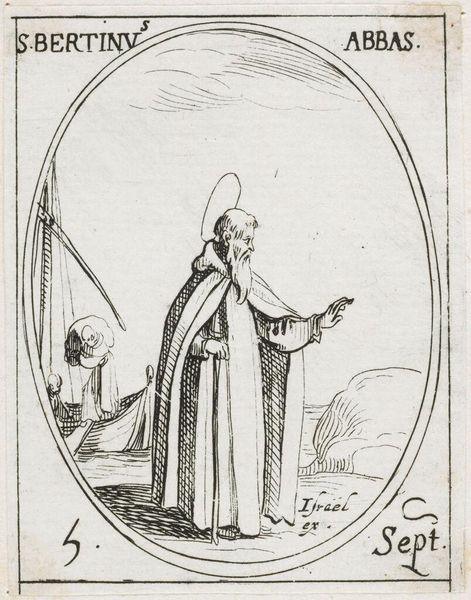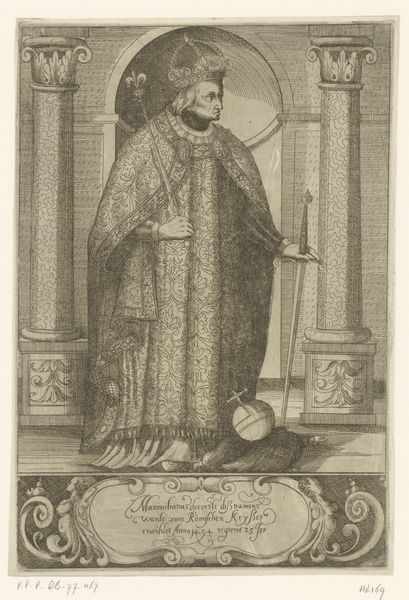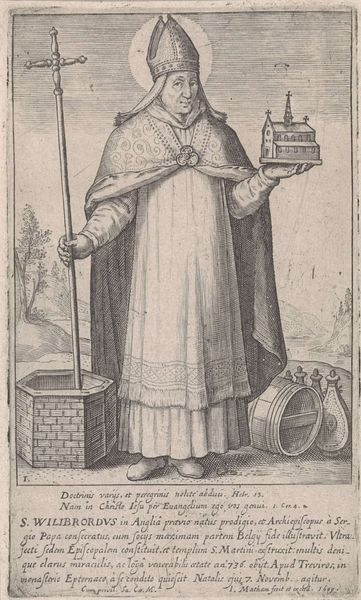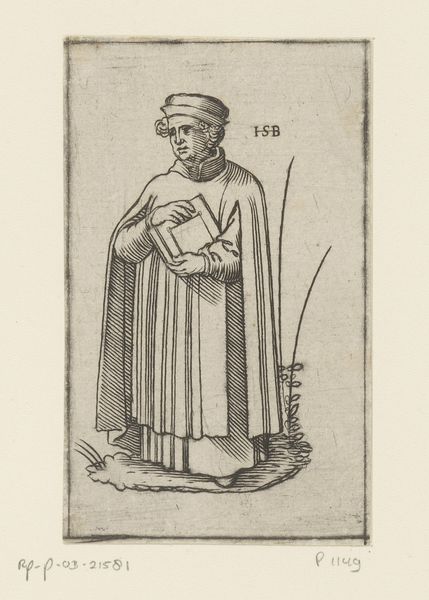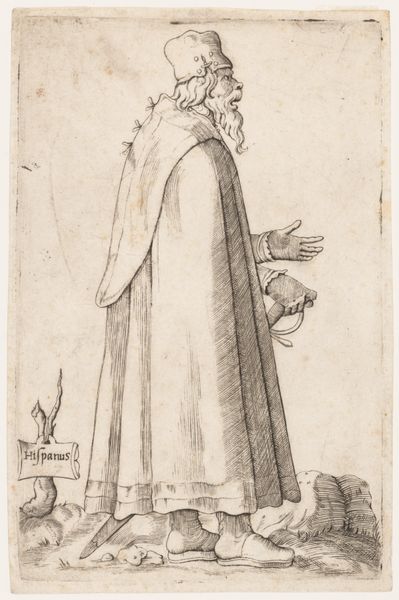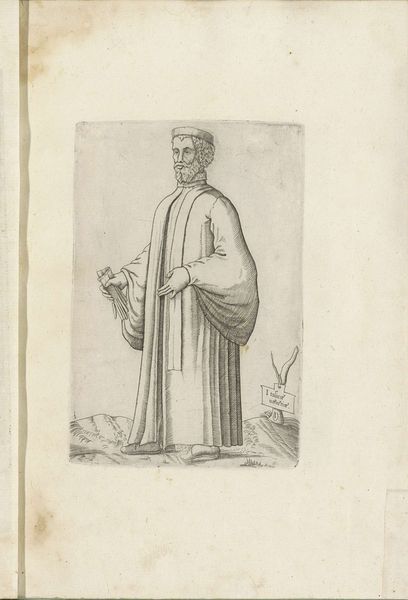
print, engraving
#
portrait
#
baroque
# print
#
old engraving style
#
history-painting
#
engraving
Dimensions: height 140 mm, width 84 mm
Copyright: Rijks Museum: Open Domain
Curator: Jacob Matham’s “Heilige Willibrord,” an engraving from 1609, presents the saint in elaborate detail. I am struck by the juxtaposition of the figure against what seems to be a landscape on one side, versus more mundane and man-made things on the other, such as the well or those containers. How do you interpret this work? Editor: Well, the composition seems very deliberate, with the saint’s figure commanding central attention. I also see a clear contrast in textures—the smooth face and vestments versus the rough surface of the well and barrels. What stands out to you about this work formally? Curator: Formally, Matham uses a consistent linearity throughout. Notice how each element—from the folds in Willibrord's robes to the individual bricks of the well—is delineated with nearly uniform strokes. The organization in the round is also apparent, focusing on a series of objects each of which leads to an interpretation of Saint Willibrord. What do you make of it? Editor: You’re right; that uniformity is quite striking, yet there are some aerial qualities to it that indicate a kind of skill and realism. Would it be fair to read into his clothing or position some expression of this style? Curator: Perhaps. What is compelling about the figure of Saint Willibrord himself? Is there an engagement with art and the subject? Consider how the treatment of his face or posture influences our perception. The interplay of lines creates light and shadow, shaping the volumes. This all suggests not only some visual quality and an appeal for further inspection and enjoyment, but the composition directs us. The lines all drive toward that object held by Saint Willibrord, perhaps indicating its importance? Editor: That's fascinating. Looking closer, the lines do seem to converge around that architectural model. It gives such directionality to the work as a whole. I hadn't thought of it that way before! Curator: Indeed. Appreciating how an artist like Matham meticulously constructs an image allows us to move past any preconceived ideas to more meaningfully understand the choices they were making with the subject. It gives us all much to consider, from semiotics to philosophical interpretation, using art for further cultural inspection.
Comments
No comments
Be the first to comment and join the conversation on the ultimate creative platform.
